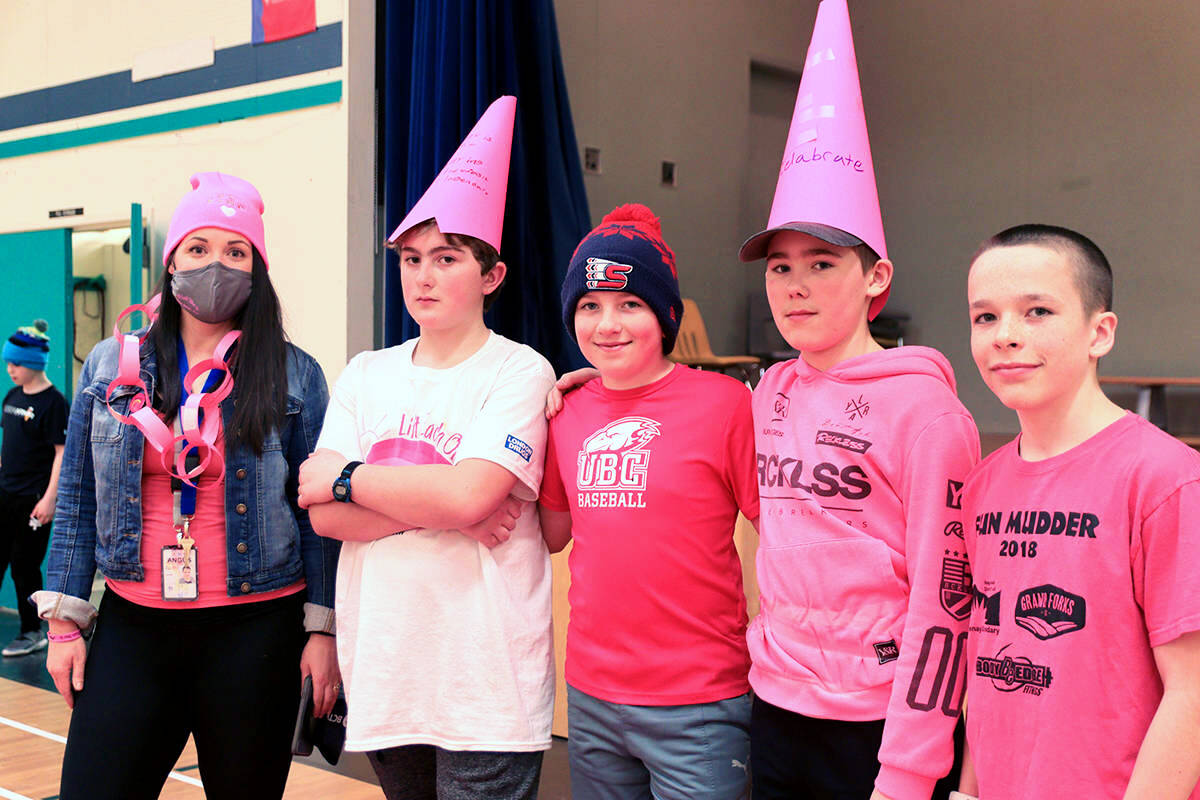Don’t just wear a pink shirt on Wednesday, Feb. 23. Take a stand by showing others that bullying is not okay.
The Government of B.C. defines bullying as “intentional, hurtful and aggressive behaviour that makes others feel uncomfortable, scared or upset.” One in three Canadian teens said they’d experienced this mistreatment ahead of last year’s Pink Shirt Day, according to the province.
VIDEO: Grand Forks’ elementaries support Pink Shirt Day
That figure would seem to be on the low side, given that nearly half of Canadian parents had said their kids had been bullied recently. Among these children, those who identified as being lesbian, gay, bisexual, trans-gendered, two-spirited queer or questioning (LGTBQ) were three times as likely to suffer the abuse than their heterosexual peers.
Bullies are likely to pick on someone else’s sexuality, but they’re not above targeting someone’s religion, disability or culture. They weaponize the way other people look, love and believe in order to put them down.
Bullies and the act of bullying itself come in many forms. One becomes a bully, when they choose to participate in bullying behaviour. It sounds obvious, but this kind of bullying is perhaps more subtle than it would appear.
Laugh when you see someone being made to feel hurt, belittled or afraid and you’re a bully. Snap a cellphone pic of the abuse for social media and you’re a prolific bully. Choose to do nothing in that scenario, and you might as well be a bully all the same.

Meanwhile, bullying causes profound and long-lasting emotional harm in survivors. Whether it’s hitting someone over the head, knocking their school books onto the playground, or plain, old-fashioned name-calling, in person or online, bullying can lead to depression and anxiety — even suicidal thinking. It can also leave someone thinking they have to cleanse their experiences by bullying others.
Whether it’s done by a child or an adult, bullying is about power.
Wearing a pink shirt on Pink Shirt Day is a noble and courageous act, but we’ll need to directly oppose bullying if we’re to stamp it out.
None of this calls for retaliation. But, think of the pink shirt you’re wearing as a promise to act when you come across bullying. If you see someone being bullied, put the bully in their place by saying, “Knock it off.”
Let the person who’s been bullied know they’re wanted, valued and appreciated.
If you feel it’s not safe to intervene, take attention away from a bully until you can report their behaviour to an adult or a trusted colleague. Even small gestures of kindness can make a world of difference to someone who needs it.
Whatever else can be said, bullying is positively corrosive and it has no place in our schools, our homes or our workplaces.
So, please, join people across B.C. in wearing a pink shirt on Feb. 23. We can achieve great things when we work together.
@ltritsch1
laurie.tritschler@grandforksgazette.ca
Like us on Facebook and follow us on Twitter.
laurie.tritschler@boundarycreektimes.com
Like us on Facebook and follow us on Twitter.
